Earthing System: Working Principle, Types, and How to Install?
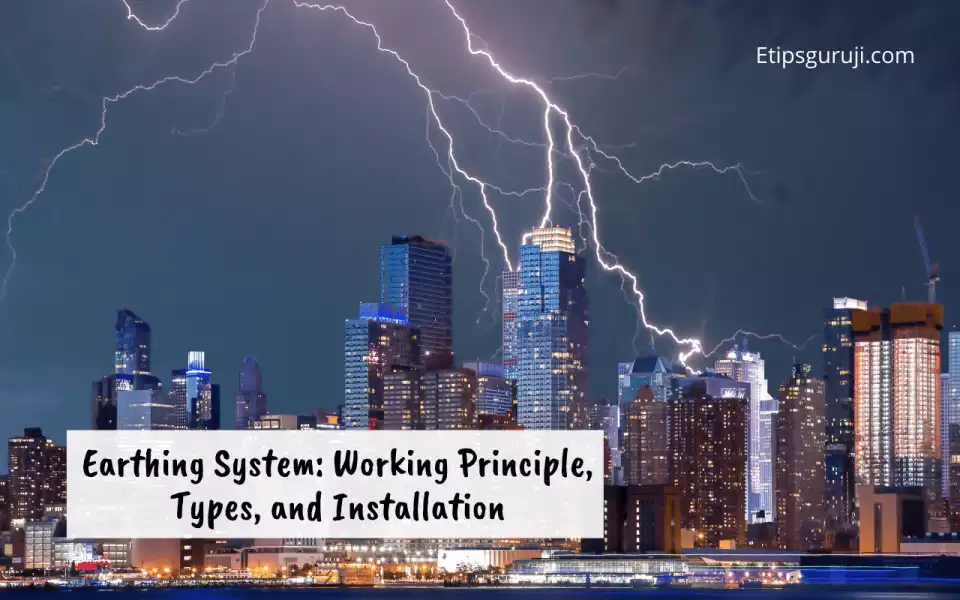
What is Earthing System?
Earthing is the process of connecting an electrical conductor to the ground. It is done by digging a trench and running an electrode cable from the building to the earth. And the earthing system is a system that is used to provide a path for the electric current to return to Earth
This process has many benefits. For example, it can reduce the risk of electric shock and can help with interference in radio transmissions, decrease power distribution losses, and improve electromagnetic compatibility.
Important Terms:
- Grounding/Earthing: In electrical engineering, earthing refers to the electrical connection between an electrical circuit and the ground. This is also known as ground connection or grounding.
- Earth loop: a current circulating in a loop between a power supply and the earth (ground).
- Ground loop: a current circulating in a loop between two or more points of ground in an electrical circuit.
History and Development of Earthing System
The first documented earthing system was created by Michael Faraday in 1832. Earthing electricity is a process that has been around for many years.
However, it was first used in 1881 and it has been used to transfer electric current from transmission lines to the ground or earth. It is a process to transfer the electricity from the transmission line to be used in our homes.
Working Principle of Earthing System
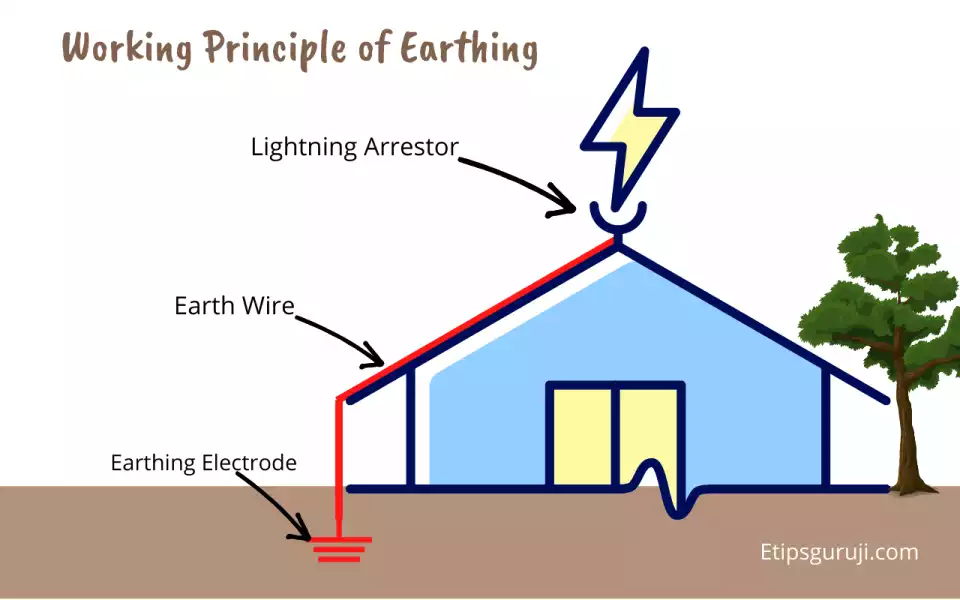
In an electrical circuit, it is common practice to connect the neutral wire of an electrical supply cable to the “earth” pin of an electrical outlet or disconnect, which returns electrical current to the earth in case of a power surge.
In the US, most outlets are earth pin only, but one or two ground pins (one neutral and one earth) are commonly found on some older outlets.
The earthing system consists of three parts:
- The grounding electrode, which can be a rod of metal or a plate made of metal,
- The stake is driven into the ground, and
- The wire connects the grounding electrode to the power source.
Components of Earthing System
The Earthing system consists of the following components:
1. Earthing Wire
Earthing wire provides an electrical connection between the earth and your grounding rod. It acts as a conduit for current flow in an earth-ground system. The wire can be copper or aluminum.
2. Ground Rod/Electrode
Grounding rods are made of metal so they can easily conduct electricity and are attached to earthing wire to deliver the lightning charge into the ground. Ground electrodes come in different lengths and thicknesses.
3. Inlet Cord/Lightning Arrestor
A lightning arrestor collects the lighting or any charge and protects the building from any damage. They are usually installed a few feet above the roof top.
Types of Earthing System
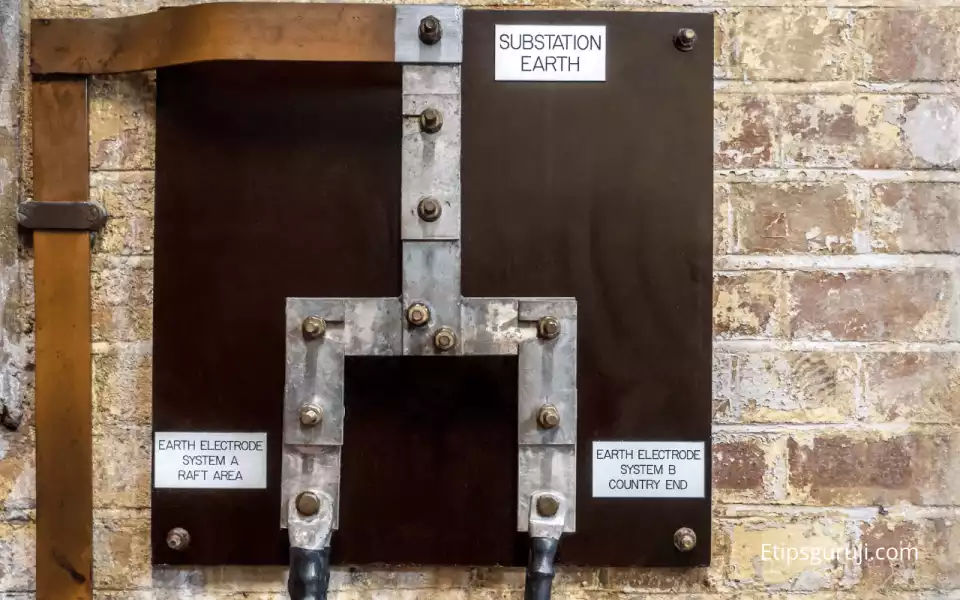
In electrical systems, the main types of earthing are:
- Pipe Earthing
- Plate Earthing
- Strip Earthing
1. Pipe Earthing System
The earthing of a pipe consists of connecting the pipe to a continuous metal wire and running this wire continuously to a suitable point on an electrical circuit.
Earthing piping is the process of grounding a water pipe to prevent corrosion and failure. This can be achieved by driving a ground rod into the soil or by connecting the pipe to a ground wire in the building’s Ground Fault Circuit Interrupter (GFCI) or other earthing points.
2. Plate Earthing System
Is the most commonly used type of earthing system. It consists of a continuous conductive plate, usually made of copper or aluminum, buried in the ground.
The plate must be connected to the earth at all times.
3. Strip Earthing System
Consists of many short lengths of conductive material that are buried into the ground at a definitive distance.
Strip earthing is used when it is not possible to bury a continuous plate or where there are high costs associated with burial.
What is the Cost of Installing Earthing System at Building?
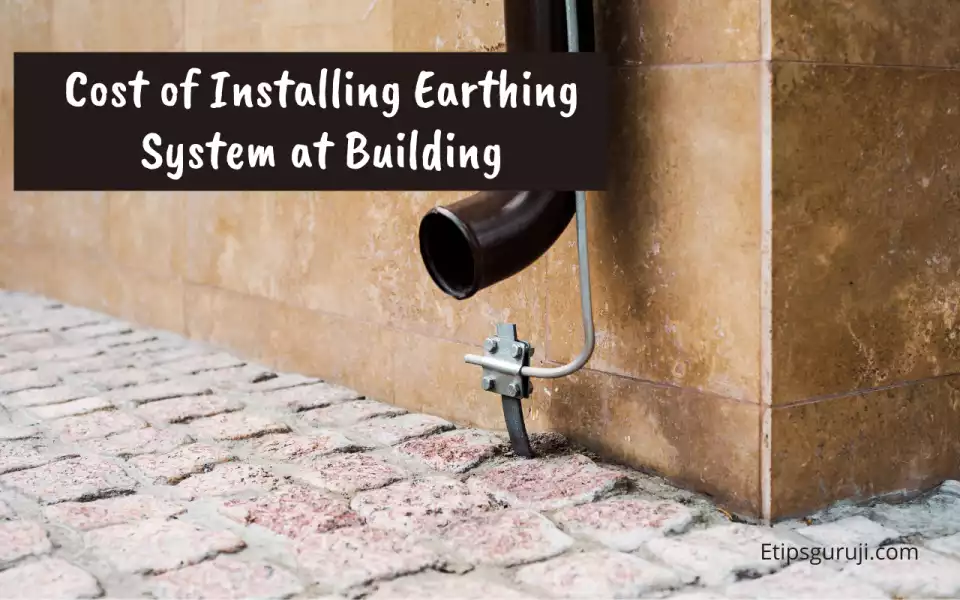
The cost of installing an earthing system in your home depends on several factors such as the size of your property, the number of floors, and the number of outlets required. The cost also depends on whether you want to install it yourself or hire a professional electrician.
If we consider a typical office building which is around 3000 square feet with two tenants then the cost of installing an Earthing system would be around $7000
What if, You install by Yourself? The average cost for this type of installation should be around $250-$400, The cost of installing an Earthing system is about $40-$50 per square foot or about $1 per square foot for the electrical wiring
Earthing System Brands in the USA
| S.No. | Power Distribution/Grounding-Systems |
|---|---|
| 1. | GroundLinx |
| 2. | ERICO / nVent |
| 3. | Thomas & Betts Corp. |
| 4. | BURNDY® |
| 5. | Harger Lightning & Grounding |
| 6. | Superior Grounding Systems Inc. |
| 7. | Panduit Corp |
| 8. | Greaves Corp. |
| 9. | Rabun Labs Inc |
| 10. | Lyncole Industries, Inc. |
Earthing System Calculation
The earthing system is designed with a voltage of 400 V or less and a current rating of 25 A or less. The earthing system should be designed according to the following three criteria:
1. It must be able to carry fault currents up to the current rating of its components, including earth electrodes, soil resistivity, and other factors.
2. It must meet all relevant safety requirements specified by regulations such as BS 7671 (British Standard Code of Practice 7671).
3. It must comply with normal operating conditions specified by the local authority (such as the local authority’s electrical installation regulations)
Earthing system can be calculated using the following formula:
Zr = 1/(2πfC)
where Zr = impedance, ohms f = frequency (Hz) C = total capacitance (picofarads)
Earthing Systems for Homes Vs Buildings Vs Telecom Towers
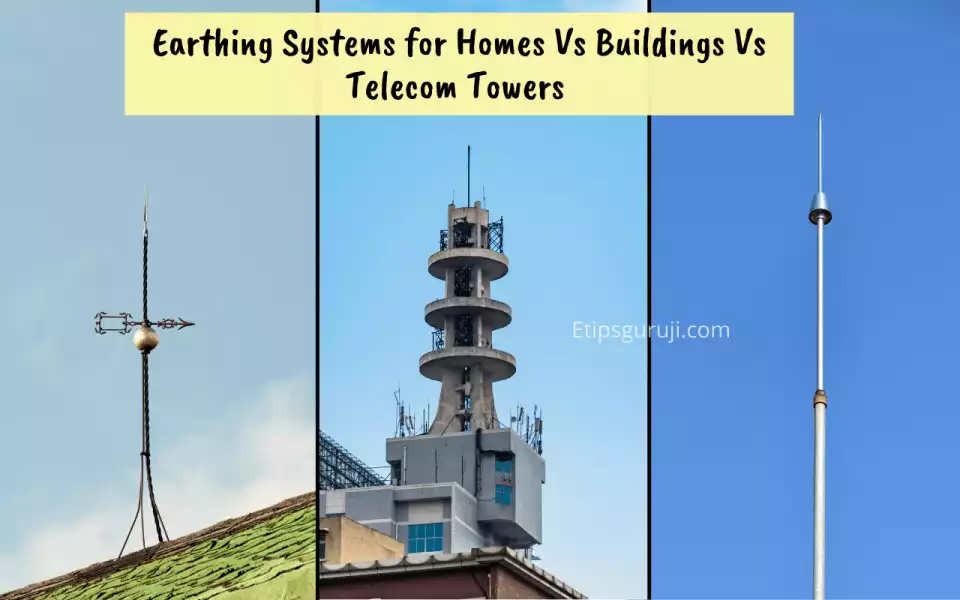
Earthing systems for residential, commercial, or industrial buildings are designed to provide safe and reliable grounding for the electrical system.
| Earthing Systems for Home | Earthing Systems for Building | Earthing systems for Telecom Towers | |
|---|---|---|---|
| Feature | The system for the home has a wire that is connected to the earth, this wire is connected to a ground rod which is buried in the ground. | The system used in buildings is similar to that used in homes except that it uses two transformers instead of one. | Telecom tower grounding systems are designed specifically for use with telecom towers. |
| Protection Against | Residential earthing systems provide protection against ground faults and lightning strikes when installed properly and maintained regularly. | Commercial/industrial earthing systems must meet all of the same standards as residential systems, but they usually require more complex installation because they are larger in size. | Telecom tower grounding systems are used to protect telecom towers against lightning strikes and usually have thick grounding wires. |
| Earthing Wire | Thin Wiring | Metal strips or thick wiring | Metal Wiring with protective plastic insulators |
Advantages of the Earthing System
- Lower costs, High efficiency, Safety, and Environmentally friendly
- The main advantage of an earthing system is that it prevents people from receiving an electric shock when they touch a live wire or device.
- Reduce the risk of electrical fires caused by stray currents flowing through wiring systems.
- Earthing systems also provide an alternative method for powering homes and businesses in developing countries and areas without reliable infrastructure.
Disadvantages of Earthing System
- An earthing system is that can cause interference with electronic devices such as computers or televisions if they are not properly grounded.
- Require power sources to be connected directly to potentially dangerous areas such as machinery or electrical outlets. This can cause workers who use these areas to become injured if they come into contact with live wires.
- Earthing systems require a deep intallation of land because they rely on long wires that run from the ground up into buildings
General FAQs
1. What is Grounding?
The purpose of grounding in electricity is to create a connection between the body and the earth. For example, if you touch an unpainted metal object during a thunderstorm, you are grounded like a lightning rod and will not be struck by lightning. In electricity, it ensures that if there is an electric current flowing through your body, you will remain safe from harm.
2. What is a Good Ground Resistance Value for the earthing system?
A good ground resistance value should be 5.0 ohms or less. The ground resistance value is a measure of the amount of resistance to current flow in the earth. It is a critical parameter for any earthing system, as well as for lightning protection systems. The ground resistance value depends on both the soil type and the depth of burial.
3. Why one should earth my electrical system?
There are several good reasons for earthing your electrical system. First, it reduces the risk of electric shock if you touch a live part of the circuit. Second, it ensures that your electrical system is properly grounded so that you can safely use appliances with three-pronged plugs.
4. How do I know if my house has an earthing problem?
To ensure safety at home, you should check your wiring regularly for any signs of wear and tear, such as fraying insulation on wires or loose connections between appliances and switches/sockets. If there’s any sign of damage, you should call a qualified electrician to fix it immediately.
Read More:
